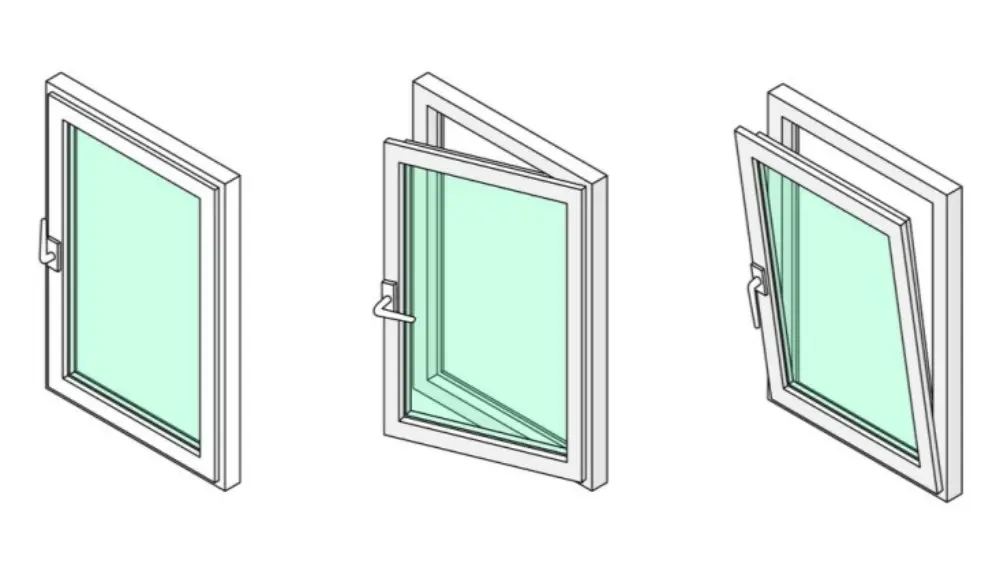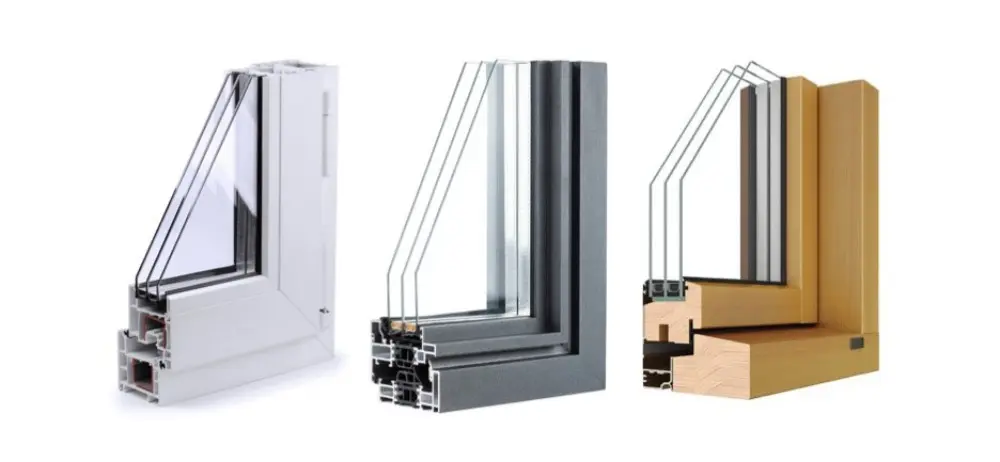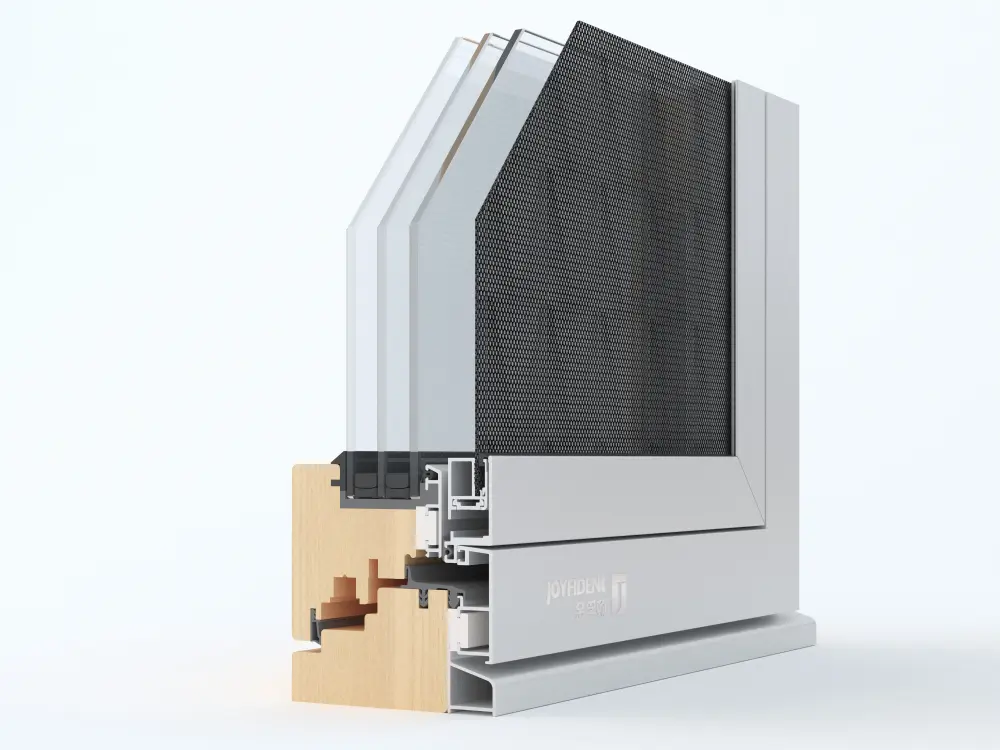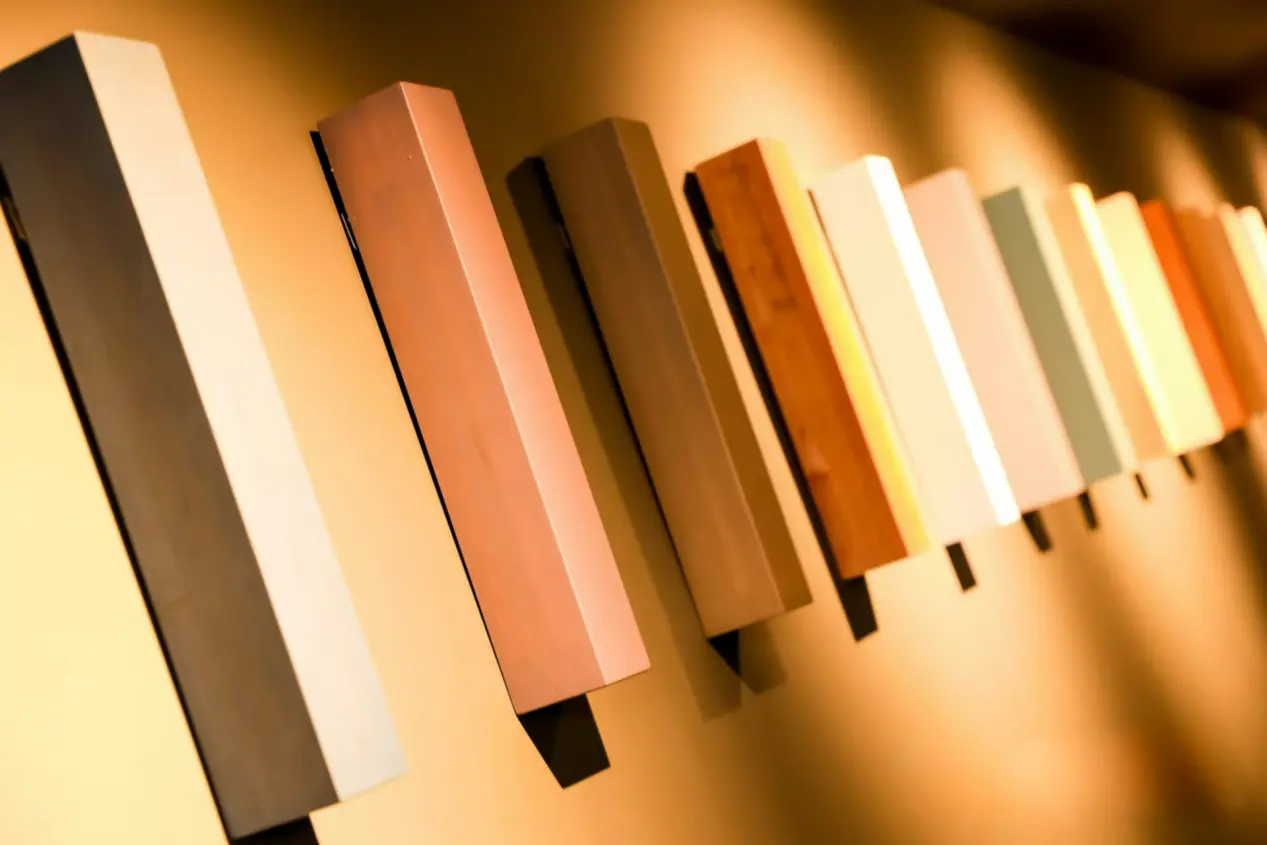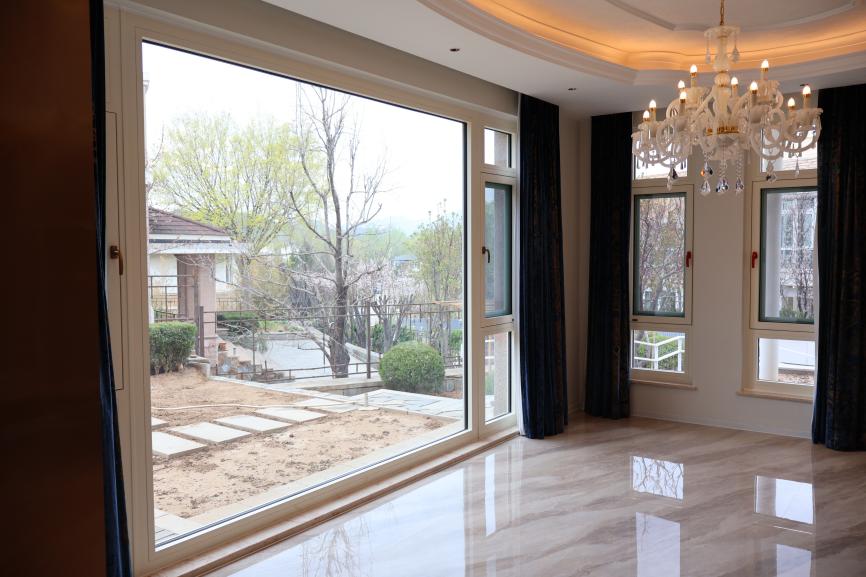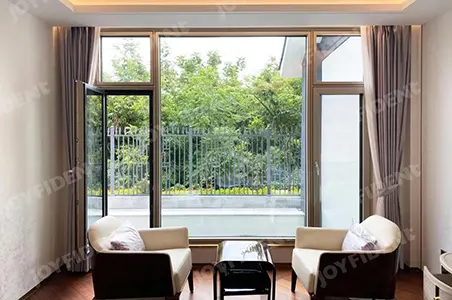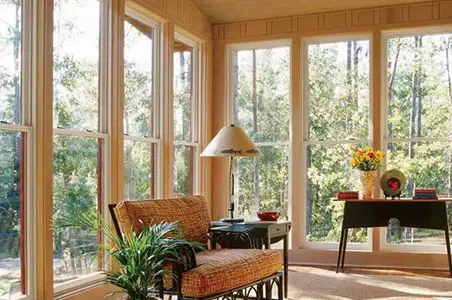Global Aluminum-clad Wood Window Applicability Map: Diverse Adaptation of Climate, Culture And Craftsmanship
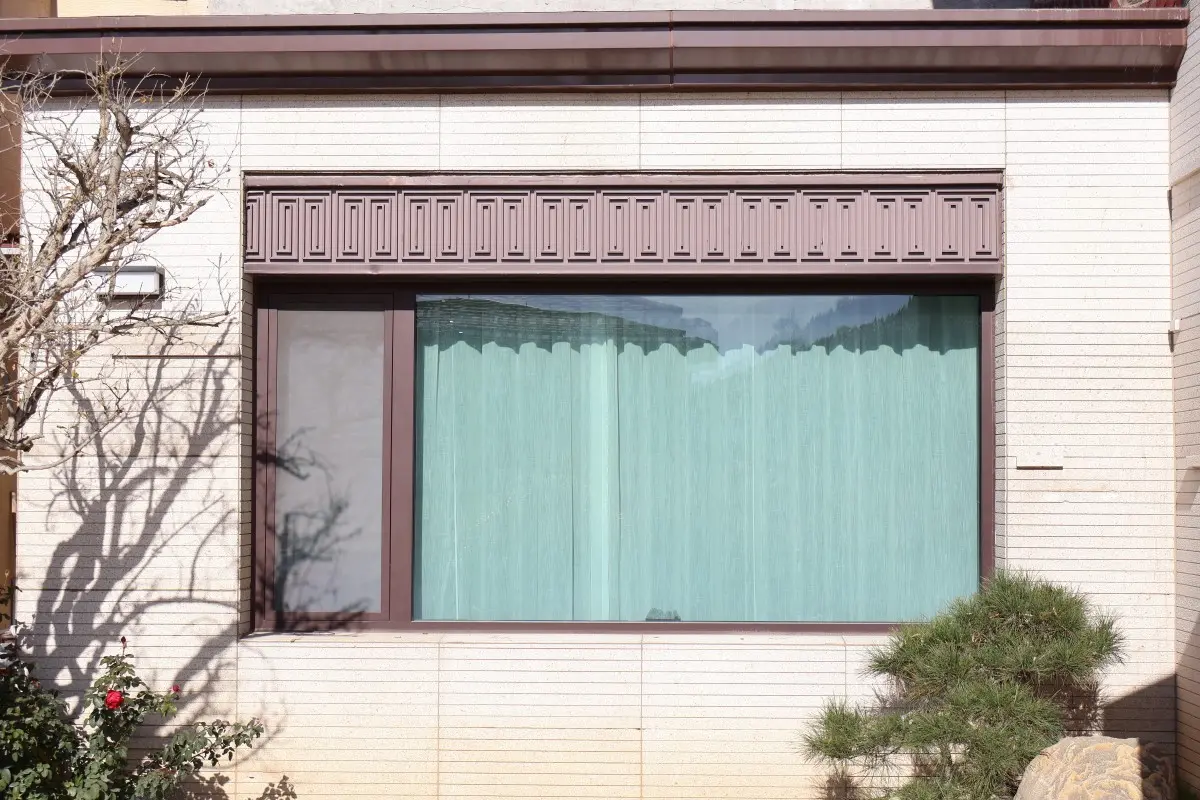
In recent years, aluminum-clad Wood Windows have gradually become a popular choice in the global high-end building market due to their unique performance and aesthetic advantages. However, the climate conditions, architectural styles and craftsmanship levels of different countries vary significantly, resulting in obvious regional characteristics in the applicability of aluminum-clad wood windows.
1. Northern Europe and high-cold regions: inward-opening design to cope with the challenge of snow accumulation
Countries north of the Alps, such as Germany, Finland, and Norway, are traditionally suitable for aluminum-clad wood windows. These regions have long winters and heavy snowfall, and the inward-opening window design can avoid snow accumulation from hindering opening. In addition, the wood layer of aluminum-clad wood windows has good thermal insulation performance (heat transfer coefficient as low as 1.3), while the outer aluminum layer enhances weather resistance, especially suitable for extremely cold and high humidity environments.
2. Developed European countries: a combination of systematic technology and high-end aesthetics
Countries such as Italy and Belgium have a very high acceptance of aluminum-clad wood windows. The demand comes from two aspects:
Precision technology: New technologies have solved the problem of wood deformation through anti-cracking technology and automotive-grade sealing strips, and use imported hardware such as Roto and Winkhaus to improve stability;
Aesthetic upgrade: Use precious woods such as North American black walnut and teak, combined with customized spraying technology, to adapt to classical or minimalist architectural styles.
3. North America: Multi-climate adaptation and villa customization needs
In recent years, villa projects in Toronto, Canada and other places have widely used aluminum-clad wood windows. Its advantages include:
Corrosion resistance: The aluminum alloy frame is specially oxidized to adapt to rainy and windy climates;
Energy saving: The combination of wood insulation and thermal insulation aluminum profiles improves winter insulation performance by 30%;
Sound insulation: Multi-layer glass and solid wood sound absorption structure can reduce noise by 35 decibels.
4. China and Southeast Asia: Regional Improvement and Market Differentiation
The Chinese aluminum-clad wood window market presents a "North-South Difference":
North: Inward-opening windows are the main focus, focusing on thermal insulation and wind and sand protection performance;
South: Outward-opening windows have been tried to adapt to French architecture, but due to problems such as uneven wood quality and fragile hardware, they have gradually decreased. Due to high temperature and high humidity in Southeast Asia, more attention is paid to moisture-proof technology, and many factories use water-based paint technology to solve the problem of wood water absorption.
5. Emerging Markets in Central Asia: "Belt and Road" Promotes Technical Cooperation
The demand for building materials in Central Asian countries such as Uzbekistan is growing rapidly, and the import volume of glass in 2024 has increased by 3 times year-on-year. With cost advantages and ISO standard technology, Chinese aluminum-clad wood window companies are filling the gap in the local high-end door and window market through the "Belt and Road" cooperation.
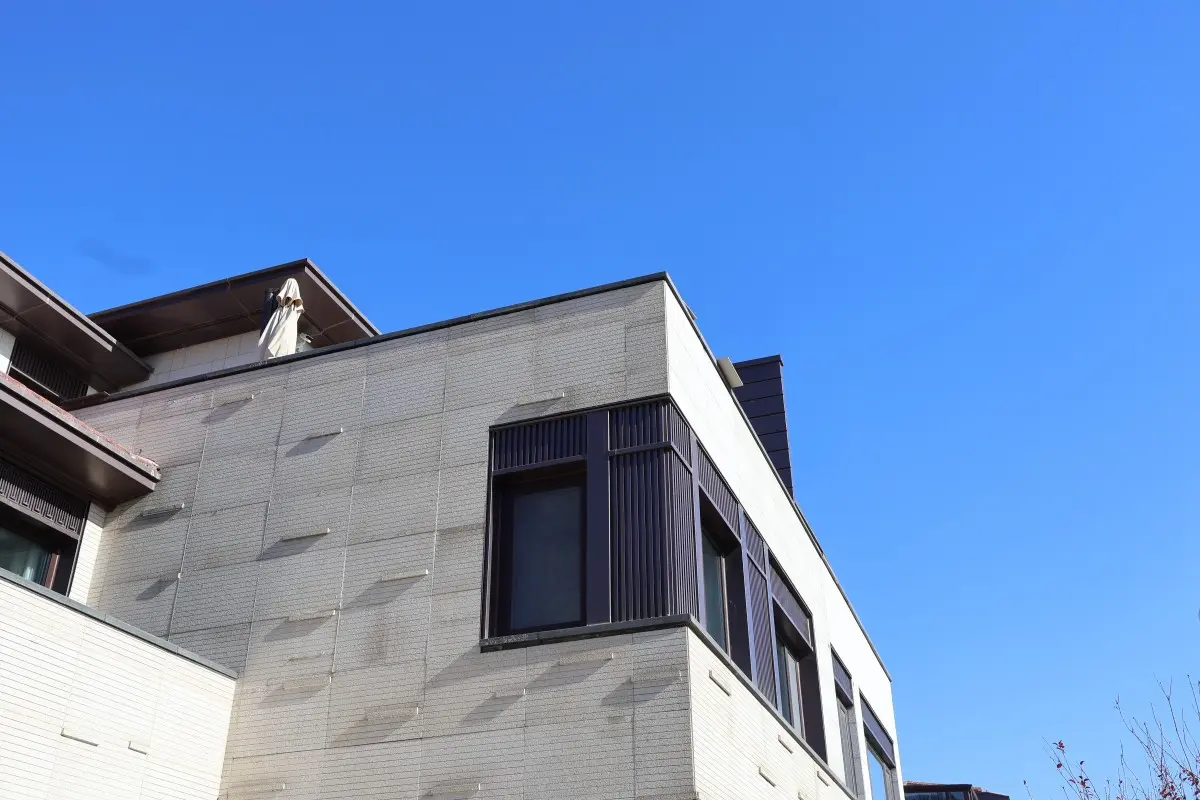
In the future, the global layout of aluminum-clad wood windows needs to take into account local improvements: strengthen sealing in high-cold areas, improve moisture-proof technology in humid and hot areas, and emerging markets need to balance cost and quality.






